Home » Posts tagged '#EdTech'
Tag Archives: #EdTech
Virtual Field Trips with Google Cardboard
Google Cardboard is an affordable virtual reality viewer. The sets are typically made out of cardboard or plastic, keeping them cost-effective and easier to use in classrooms. By sliding a smartphone that has the Google Cardboard app installed into the headset viewer, users can experience a 3D virtual reality at a low cost.
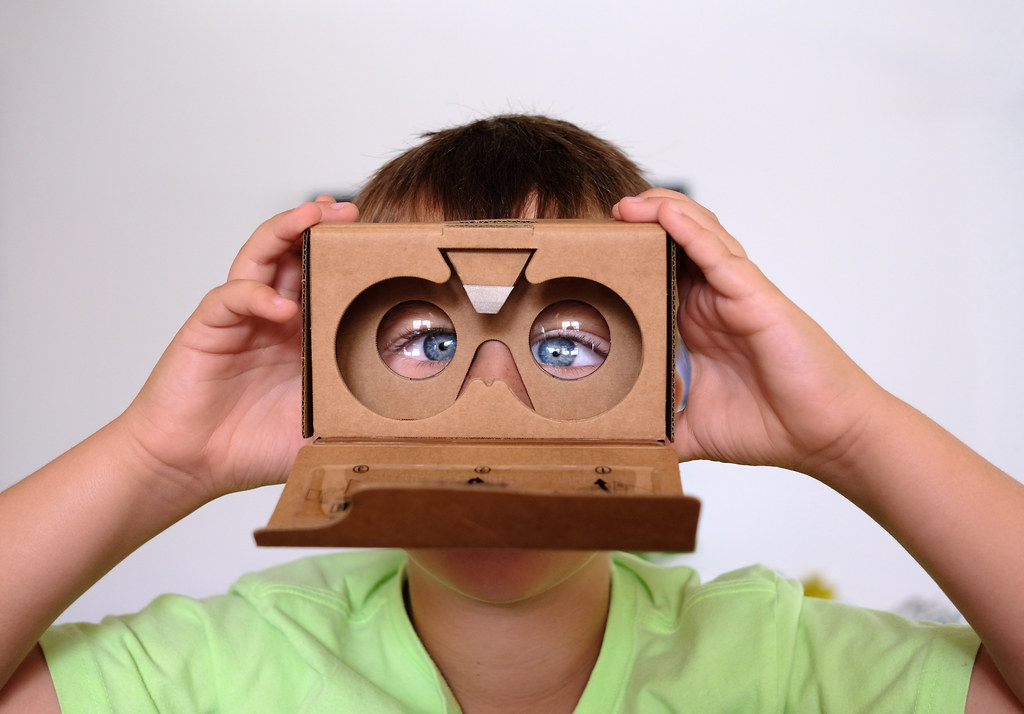
Using Google’s Arts and Culture Expeditions, students can use their Google Cardboard headsets to take virtual field trips to a variety of places. The tool allows you to choose from five different subjects; Science and Technology, Arts, Geography, Natural History, and History. For this post, I’ll be discussing a virtual field trip that is useful for history classes.
There are multiple topics under the history tab from ancient history to Black history. By clicking on the Egypt option, viewers can take a 360-degree tour of the Pyramids at Giza. Each slide gives a brief description of the history.

After touring the pyramids the expedition moves on to teaching about The Great Sphinx. These slides give a history of The Sphinx and some fun facts as well as a 360-degree view of the historic site. Following these slides, a brief overview of the Mastabas, the structures used as tombs for nobles located near The Great Sphinx, is given as well as a tour of them.

Many other important historical locations throughout Egypt are shown in this expedition including the boat pits located at the bottom of the Khufu’s Pyramid, the Causeway, and Cairo.
On the main page for the Egypt expedition, there are even more stories to be found including Myths and Heroes and The Curse of Pharaoh Tutankhamun. Below the stories collection is 8,910 items that students can view to explore Egypt even more in-depth.
These expeditions with Google Cardboard are a great way to give students a new view of history. The tool allows them to step into the location or the time period through virtual reality, giving them a better understanding of the subject. Using Google Cardboard to teach students about the culture and rich history of regions all around the world can be made easy with the use of virtual reality.

Thank you for reading!
Samantha Pollina
Google Cardboard in the Classroom
Google cardboard is a cheap resource that can be used to enhance global learning in your classroom! Google cardboard will grab the attention of all students and keep them engaged in class.

What can you do with Google Cardboard?
- Virtual field trips all over the world
- Watch 3D videos on youtube to explore different parts of the Earth
- Look at 3D exhibits with Sketchfab
- Use Google Maps to walk around different cities
- Encourage students to take 3D pictures of places they visit, so they can share them in class with Google Cardboard (https://ditchthattextbook.com/12-ways-to-use-google-cardboard-in-your-class/)

How can Google Cardboard Enhance Global Learning?
Google cardboard can open a door for students to learn about any place in the world. However, it takes learning to a completely different level by letting students “travel” to each destination. They can travel to any city, any country by the click of a few buttons and explore the beauty of it. By allowing students to explore in this way, it gives them a unique experience that will stick with them for a long time!
Thank you for reading!
Jillian DeMore
@Demorejillian
Virtual Reality using Google Cardboard in the classroom!
Have you heard of Google Cardboard? or are you familiar with the various features it offers? If not your in luck because today I will be covering its awesome features and how teachers can use it in their classrooms!

and price of each.
So what exactly is it? Well according to Google it is, “…an inexpensive handheld device that powers a virtual reality (VR) experience using almost any smartphone running Cardboard-enabled apps”.
To use Google Cardboard you will need, a Cardboard viewer : hardware that is used to view VR content with a smartphone. A smartphone: typically supplied by the consumer and an Android app: created by third-party developers.
You can also make your own using the instructions provided by Google:

The features of the Cardboard viewer include:
- Holder/enclosure for smartphones with screens up to 6 inches that assembles (and disassembles) in just 3 steps
- A button for performing actions with Cardboard-enabled apps, designed to work with most smartphone
- High-quality lenses made of durable material
Click HERE to read where I got this information.
Apps you can use through VR include but not limited to are Google expeditions, Veative, Nearpod, Youtube 360 videos, Google Earth Tours, Google Lit Trips etc.
In this blog post I will be focusing on Google Expedition and it’s great effects in the classroom. (Now discontinued, read article HERE)
Watch how VR has and can potentially change how teachers teach and how students learn!
Resources for teachers to know when learning about Google VR
I have included lesson plans using Google VR/ Google Cardboard below:
https://www.teacherspayteachers.com/Browse/Search:google%20cardboard
VR will contribute to successful global collaborations through teaching students to have cultural understandings, global awareness, and a historical perspective. Tools like Google Cardboard give students the opportunity to transport to other countries and immerse them in historical civilizations based on what the teacher has assigned or has included in the lesson plans.
Thanks for reading! Be sure to follow me on Twitter @smirnah1 for updates!
Out of Eden Walk
In 2013 Paul Salopek began his journey, traveling in the paths of ancient migration patterns, titling it, The Out of Eden Walk. He documented his travels through writing, video, audio, and pictures. Every 100 miles he marks his recordings. In this post, I will discuss three of the locations Salopek documented.

Salopek began his journey in Africa, in the Ethiopian Rift. He provides a panorama view of his first milestone, showing a group of people, a vehicle, and the desert. Idoli Mohamed, an Afar pastoralist is the first encounter he writes about on his journey. He asks him three questions; who are you, where do you come from, and where are you going? Idoli answers he is a pastoralist however, he doesn’t want the same life for his children. He would prefer for his children to attend school. Idoli explains people say the Afar people are from Tadjoura, Djibouti. He says that if they can be educated they could go anywhere.
At every milestone, Salopek takes a picture of the earth and the sky. In his first milestone, he shows the pile of goat dung he stands on at mile 0 of his journey and the sky, showing how bright the sun is, describing it as a “blast furnace.” Even in the picture of the sky, it’s easy to see that there are very few clouds and there are no trees for shade. This shows how brutal the conditions are in the area.

On day 654 of his journey, Paul Salopek is near Mt. Subhan, Turkey. At this point, he has traveled 2600 miles. He wrote Mt. Subhan is an extinct volcano, “it’s cone arrowed 13,000 feet into space and was very stormy. You rarely saw the summit.” The panorama shows green grass-covered hills, their cargo horse, and his traveling partner. While there are some clouds that can be seen in his panorama, none are seen in his earth and sky picture, again showing how brutal the sun is.
Salopek encounters two young boys, Yusef (14) and Eyep (15). He asks the boys the same three questions; who are you, where are you from, where are you going? Eyep answers for both of them, they are cousins from Turkey, he wants to be a teacher and Yusef wants to become a geological engineer.

Milestone 74: Every Story Contains Silences
Milestone 74, 3184 days and 7550 miles into the journey, is Salopek’s most recent milestone, posted on October 26, 2021. In the introduction, Salopek explains that he had to put the trek on hold for 20 months due to the Covid-19 Pandemic due to closed borders. He explains that crossing the border into China became completely impossible when Myanmar’s army took power in a coup. In order to continue his journey, he needed to take a plane into China. This means he skipped 251 miles, and two milestones.
At this milestone, he meets flower farmer Jiang Ji Bing. Again, he asks the three questions. Jiang Ji Bing answers that he plants flowers that are used for medicinal purposes, he is from Tengchong, and once the flowers are picked he is going back home.
Jiang Ji Bing’s flower farm is pictured in this milestones panorama, as well as mountains and buildings. In the earth and sky pictures, Salopek is standing on a partly paved path, much different than the previous two milestones discussed in this post. This shows how different each area he visits is. Some are completely barren, some are in the middle of nowhere, and some are in the middle of cities or farms.

The Out of Eden Walk is a great resource for students. This could be used in a history classroom to discuss ancient migration patterns. The documented journey is also great for showing students the diversity of the world through people, cultures, and environments. Paul Salopek showcases his journey in a way that focuses on archaeology, culture, environments, and more. This is an important resource to educate students on the social and ecological aspects and difficulties of different people around the world.
The site also features an “In the Classroom” tab which provides resources for students and teachers about the Out of Eden Walk. It offers resources from National Geographic, the Out of Eden Walk homepage, and the Pulitzer Center. These sites provide outlines, lesson plans, and educator notes.
Below is an introduction video posted on Vimeo for the Out of Eden Walk.
Thank you for reading!
Samantha Pollina
WE Are Silent: Teaching Children’s Rights
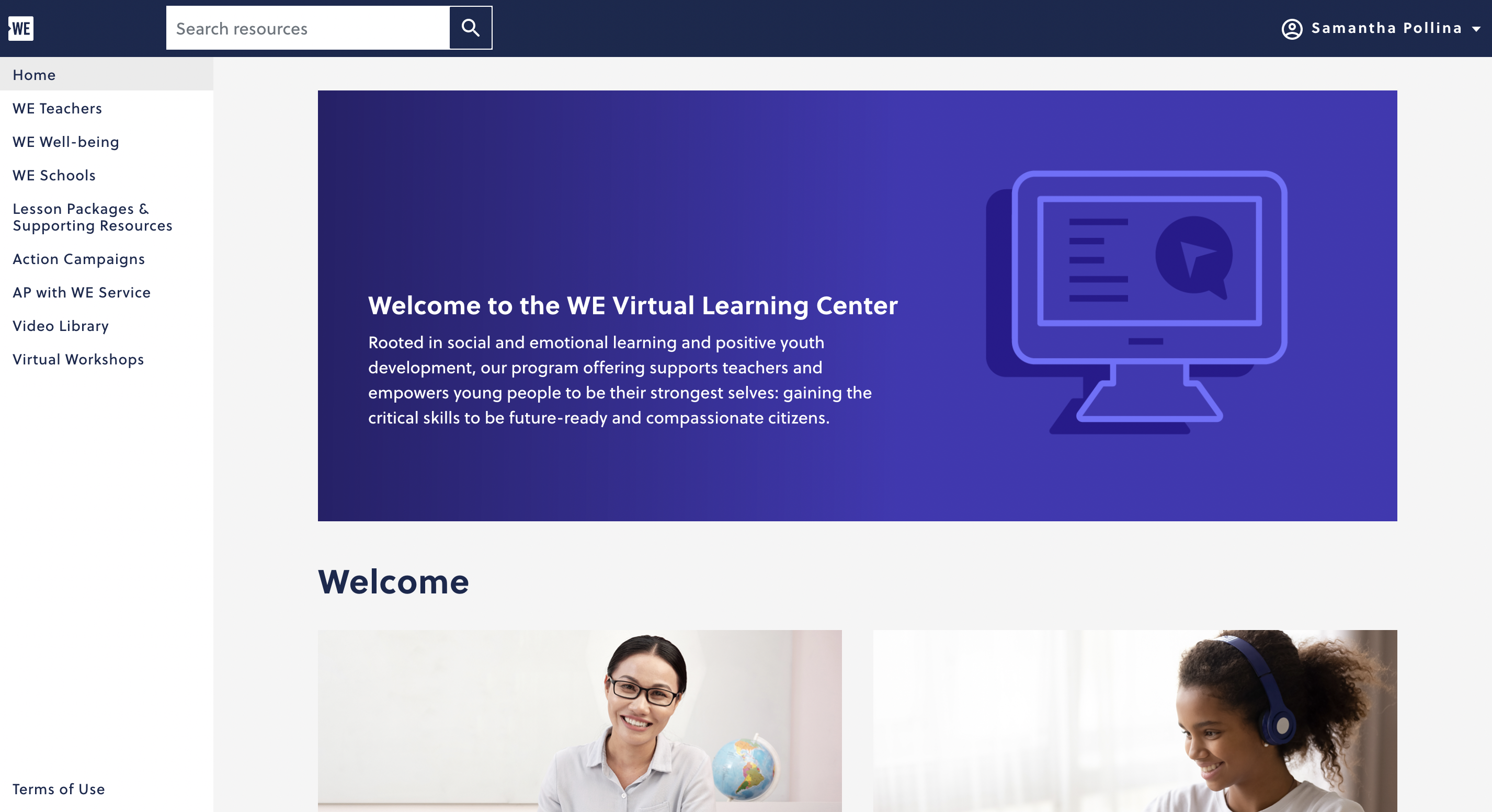
This week I took a look at WE.org, a website that provides resources and campaigns to change the world. It provides not only campaigns and volunteer work for anyone who wishes to become involved in bettering the planet, but also educator resources. Using the WE Virtual Learning Center teachers can locate lesson plans and other resources that focus on educating students on ways to promote a healthier society.
Through this website, I located a great lesson plan to utilize in a high school Social Studies classroom. The lesson focuses on children’s rights. The resource provides multiple days of plans, however, I will be focusing on Lesson #3. This lesson allows students to become aware of the denial of rights to children globally and how to become an advocate.
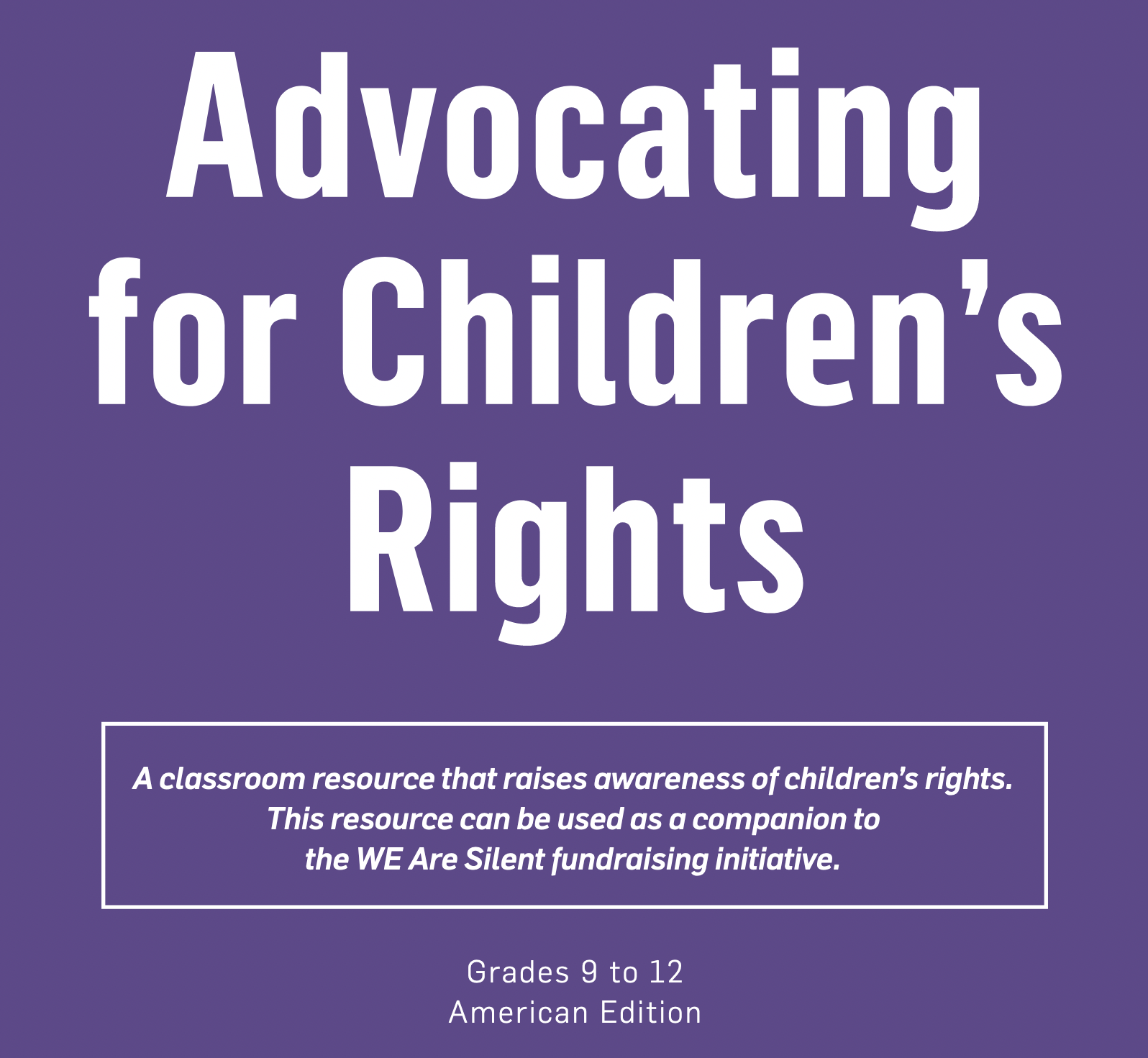
The lesson begins by telling the story of Malala Yousafzai, a young girl from Pakistan who advocates for the educational rights of girls. The plan provides a video as well as multiple questions to use for class discussion. This will provide students to share what they have learned so far, their point of view, and ask any questions they may have.

Next, the class will be divided into groups and provided a sheet of chart paper. Each group will answer the question “How are children and young people denied their rights?” The groups will then write constructive feedback on each other’s charts (using different colored ink).

The class will then discuss their charts and what the other groups wrote on their charts. Students will then provide an example of children being denied their rights and how they could become an advocate for those children. This will assess the learning of each student.
This lesson plan provides students with knowledge of children’s rights and advocacy. It also teaches them about the story of Malala Yousafzai and Pakistan. Students will be able to display their ability to write coherently and determine the meaning of words and phrases. This is a great lesson to use in a high school Social Studies class that teaches students about diversity and human rights as well as tying in the Sustainable Development Goals.
Thank you for reading!
Samantha Pollina
Being a ‘Changemaker’ in the Classroom
This week I explore the website WE.org, specifically the section devoted to teachers. WE offers free resources for teachers, so they can make a change in their class without worrying about funding. They encourage teachers to empower their students by offering FREE social-emotional training and other modules for teachers to explore.
What can you find on WE
While exploring through the website, I noticed how each module offered a table of context where they explain what will be offered in the module.

Each module includes sections that train the teacher on the issue being discussed, ways help or support the student, and worksheets/activities to include in class. The worksheets offer training for the students and gives the teacher a way to present what they’ve learned in the module into class.
Using WE in the Classroom
The learning activities given in each module are a great way to incorporate the module into the classroom.
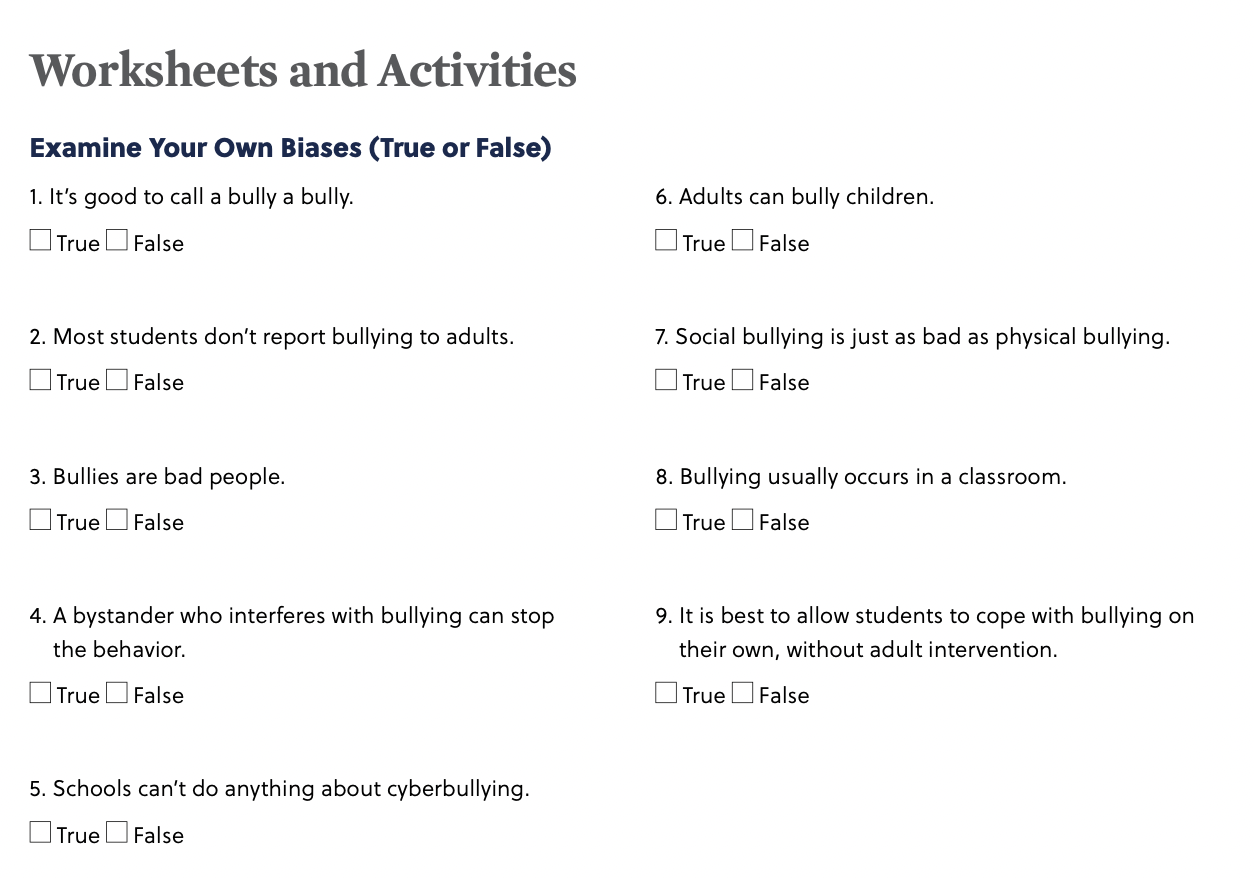
These worksheets can be used for all ages, but they may need to be altered for younger grades to understand. I will use these in my future classroom as social emotional lessons to empower my students on issues that they may face in their lives.
Thank you for reading!
Jillian DeMore
@DeMoreJillian
Virtual Field Trips
Tiffany Imparato
Virtual field trips are a fun and exciting way to bring your teaching beyond the walls of the classroom and promote technology based skills. Students of various ages can be emerged into another place just by the click of a button; this is extremely helpful due to so many restricts placed upon field trips and social distancing. Living close by in Southern New Jersey I embarrassed to admit that I have never had the chance to visit Ellis Island and explore the history there; so I have decided to attend a virtual field trip there.

On Scholastic’s website I was able to find a fun and interactive field trip of Ellis Island to explore without any traveling needed. With a few clicks of my mouse I was able to pretend that I was one of the 12 million immigrants that entered the United States through this piece of history. It is estimated that 40% of our nations population can trace their ancestors through Ellis Island. The virtual tours guides students through the various stops along the way as the life of an immigrant coming into America. The first stop was the passage of the overcrowded ships that immigrants had to endure next health officers would board the ship and prescreen passengers. The third stop was the baggage room where they were tagged before inspections. Next step was walking up the stairs to the registry under the careful eye of doctors looking for more signs of distress. This is where people reached the great hall for more observations before receiving their infamous 6 second physicals and moving to legal inspection. If an immigrant failed the health or legal inspection they were detained on Ellis Island for lengthy times. The 9th stop is known as the stairs of separation this is where one would go to medical detainment, legal detainment, or be free to enter the country. Those lucky enough might be greeted by awaiting family at what is now called the kissing post. It is sad to imagine how many dreams were made there and crushed as well.
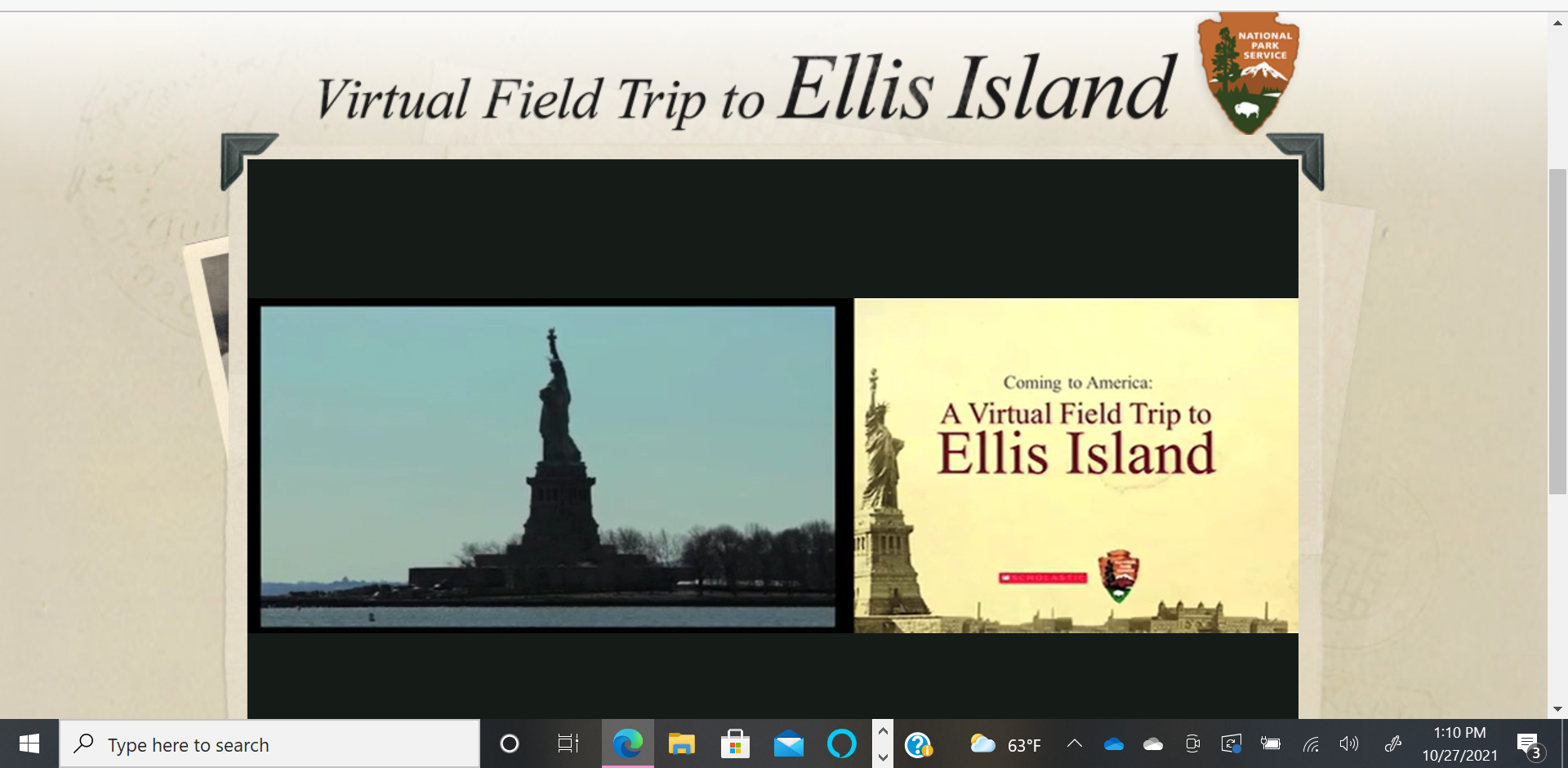
The virtual field trip includes many photos, audio links, and maps of the island in addition to the interactive tour. I can see this tour being used for various student age levels and could be followed up with fun learning assessments and projects. There is stories of young immigrants and great data as well to explore. I found this activity to be exciting and very informational and know that I will be using virtual field trips in my future classroom.
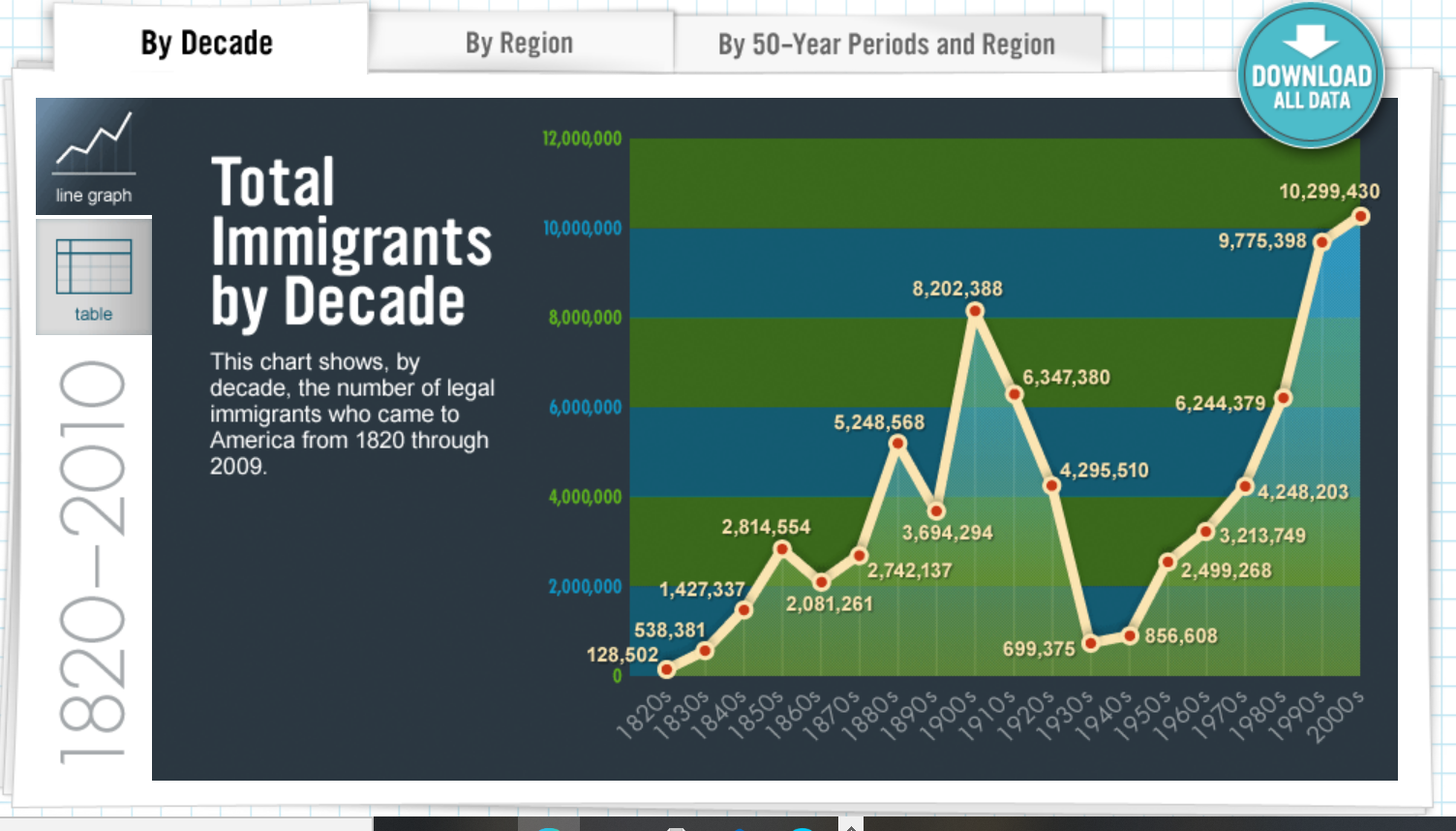
Subtitles
This week I ventured into something new. I watched a Korean television show with English subtitles. While, yes, this is something very popular for many people; however, I have never experienced it.
I watched the show ‘A Love So Beautiful‘, it was described as a lighthearted, romcom, which is right up my ally!

I was surprised that most things were very culturally similar to things in the United States. However, I did notice some differences. For example, the students at school wore uniforms that were unlike school uniforms in the United States. Also, they had name tags on their uniforms. It was also interesting to just hear the Korean language, since it is something I do not typically hear.
There were a lot of similarities. For example, high school sports games, teenagers being distracted in class, and a classic teenage love story. The teenagers were also hanging out in what appeared to be a karaoke club. This is not something I think is very common for teenagers in the United States. The characters rode bikes to school and around town. They were seen eating Korean food, things that I have never seen before. They were also seen in a grocery store where I was able to see different types of things sold there as well. Throughout the two episodes I watched, there was sunny weather, and this set the tone for the show. I noticed beautiful mountains over the water and interesting tress I do not see here. Also, the architecture was very beautiful in this setting.
It was very interesting to see the cultural differences in this episode, but also to see the similarities. The teenagers portrayed in this show are very similar to teenagers in the U.S.. It is important to remember that, sometimes, the only thing that makes us different is a language barrier!
Thanks for reading!
@DeMoreJillian
Jillian DeMore
Communication Using Microsoft Forms
Microsoft Forms is a survey taking tool, however, it can be used in a multitude of ways in a school setting to improve communication.
Using Forms with Students
Forms can be used for any subject in your classroom. From ELA, to mathematics, and even social emotional learning. Forms allows for the teacher to create multiple choice, multiple answer, or open ended questions. By using Microsoft Forms, students are able to add links to their open ended questions in order to prove further understanding. This feature can be incredibly helpful in an inclusive classroom. While this can be used for traditional testing, Forms can also be used to do pre-assessment testing where students are able to vocalize their concerns. Also, Forms can be used as a way for teachers to ask their students questions about their social emotional development because their answers are not visible to classmates. This can help with more fluidity in communication in the classroom.

Using Forms with Faculty
Forms can also be used when collaborating with your team, in a school or any other work place. Forms can help aide staff development by allowing training quizzes and surveys to improve the school environment. Also, Forms can allow teachers to collaborate when planning for school events because it can help with voting for ideas and sharing ideas in a new way.

Uses for Forms
- Pre-assessment
- Quizzing
- Voting
- Survey
- Mathematical quizzing
- Allows students to communicate thoughts in a less traditional way
Use Forms!
I highly encourage everyone to explore Microsoft Forms, and discover all of the amazing features that can be used to help make your classroom more interactive.
Thank You For Reading!
Twitter: @DeMoreJillian
Achieving Gender Equality
The United Nations is working on achieving sustainable development by 2030. There are 17 extremely important goals, but one that really stood out to me was to achieve gender equality and empower all women and girls.
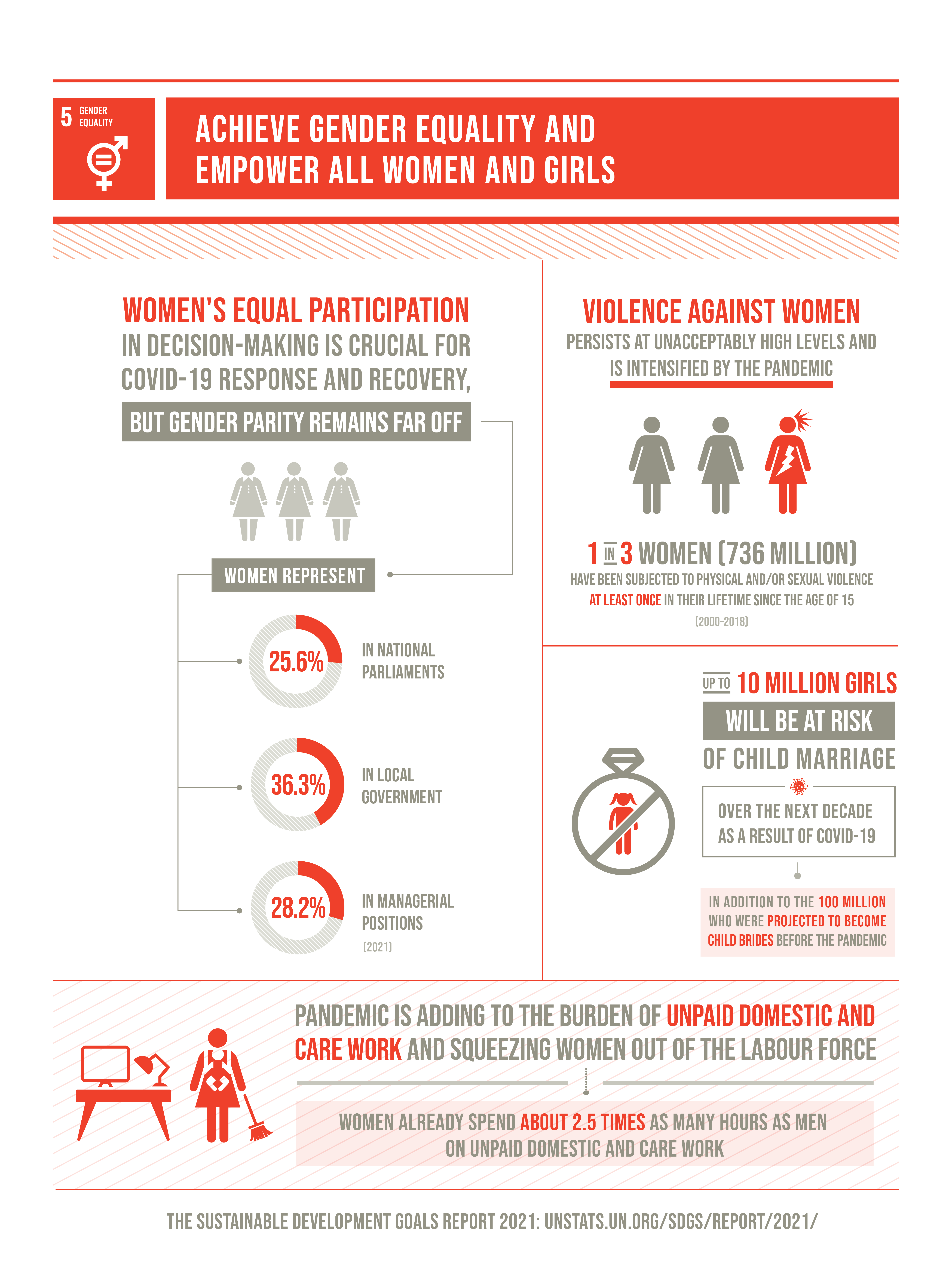
As a woman who lives in America, I know that there is still some inequality. However, I did not realize the severity of inequality in other countries. There is still massive amounts of women underrepresentation in all forms of government, domestic violence/ sexual assault is still very prevalent all over the world, and there are still so many young girls who are at risk for marriage.
Targets and Indicators
There are nine goals in ensuring gender equality by 2030.
- “End all forms of discrimination against all women and girls everywhere”
- “Eliminate all forms of violence against all women and girls in the public and private spheres, including trafficking and sexual and other types of exploitation”
- “Eliminate all harmful practices, such as child, early and forced marriage and female genital mutilation”
- “Recognize and value unpaid care and domestic work through the provision of public services, infrastructure and social protection policies and the promotion of shared responsibility within the household and the family as nationally appropriate”
- “Recognize and value unpaid care and domestic work through the provision of public services, infrastructure and social protection policies and the promotion of shared responsibility within the household and the family as nationally appropriate”
- “Ensure universal access to sexual and reproductive health and reproductive rights as agreed in accordance with the Programme of Action of the International Conference on Population and Development and the Beijing Platform for Action and the outcome documents of their review conferences”
- “Undertake reforms to give women equal rights to economic resources, as well as access to ownership and control over land and other forms of property, financial services, inheritance and natural resources, in accordance with national laws”
- “Enhance the use of enabling technology, in particular information and communications technology, to promote the empowerment of women”
- “Adopt and strengthen sound policies and enforceable legislation for the promotion of gender equality and the empowerment of all women and girls at all levels”
Progress
While it may feel like there has been a substantial amount of progress made, unfortunately, there has not. Due to the Covid-19 pandemic, we have went backwards in achieving equality. For example, violence has increased, child marriage has increased, and women are still underrepresented in government (even though they have played a crucial role in this pandemic). Women are still suffering with pay inequality all over the world.
What can you do?
I encourage everyone to look over all of the sustainable development goals, and see what you can do for your community. As for gender equality, inform others on what is going on around the world, send emails, call local government offices, attend events that are listed on the website. There are so many things you can do to make an impact on the world!
Thank you for reading!
Jillian DeMore
@DeMoreJillian
Recent Comments